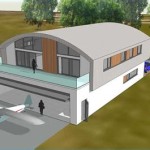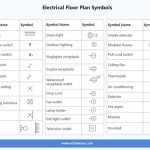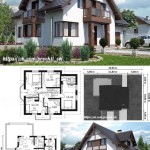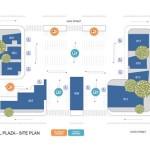Custom Built Dog House Plans
Building a custom dog house allows for tailoring the structure perfectly to a dog's needs and the owner's aesthetic preferences. A well-designed dog house offers shelter from the elements, a comfortable resting place, and a sense of security for canine companions.
Key Considerations Before Starting
Careful planning is crucial for a successful dog house project. Several factors must be considered before even picking up a hammer.
- Dog’s Size: The dog house should be large enough for the dog to stand, turn around, and lie down comfortably. However, it shouldn't be excessively large, as this can make it difficult to retain heat in colder weather.
- Climate: Consider the local climate. Dog houses in colder climates will require additional insulation, while those in warmer climates should prioritize ventilation.
- Materials: Durable, weather-resistant materials are essential. Common choices include wood, plastic, and composite materials.
- Location: Choose a location that offers some shade and protection from the wind.
Choosing the Right Plan
Once the preliminary factors are considered, selecting the right plan is the next step. Various resources are available to find custom dog house plans.
- Online Resources: Numerous websites offer free and paid dog house plans, often categorized by size, style, and complexity.
- Books and Magazines: DIY publications frequently feature dog house plans with detailed instructions and material lists.
- Custom Design: For truly unique designs, consider hiring a professional architect or draftsperson to create a custom plan.
Essential Features of a Good Dog House Plan
A good dog house plan should encompass several essential features to ensure the finished product is functional, safe, and comfortable.
- Elevated Floor: Elevating the floor a few inches off the ground helps to keep the interior dry and insulated.
- Proper Ventilation: Adequate ventilation prevents moisture buildup and helps regulate temperature.
- Removable Roof: A removable roof allows for easy cleaning and access to the interior.
- Weatherproofing: The exterior should be treated with a weatherproof sealant to protect it from the elements.
Understanding the Construction Process
Building a dog house typically involves several key steps, regardless of the specific plan chosen.
- Gather Materials: Assemble all necessary materials, including lumber, fasteners, roofing material, and any insulation.
- Cut and Assemble: Follow the plan carefully to cut the wood to the correct dimensions and assemble the frame.
- Install Roofing: Securely attach the roofing material, ensuring it overlaps sufficiently to prevent leaks.
- Add Finishing Touches: Consider adding features like a door flap, paint, or other decorative elements.
Material Selection and Considerations
The choice of materials can significantly impact the durability, cost, and aesthetic of the dog house.
- Wood: A classic choice, wood offers good insulation and can be easily customized. Cedar and redwood are particularly resistant to rot and insect damage.
- Plastic: Plastic dog houses are lightweight, durable, and easy to clean. They are often less expensive than wood options.
- Composite Materials: Composite materials offer a balance of durability and affordability. They are also resistant to rot and insects.
Insulation Options for Different Climates
Insulation plays a critical role in maintaining a comfortable temperature inside the dog house, particularly in extreme climates.
- Rigid Foam Insulation: Rigid foam boards can be cut to fit and easily installed within the walls and roof.
- Reflective Insulation: Reflective foil insulation helps to reflect heat back into the dog house during winter and reflect heat away during summer.
- Straw Bedding: A thick layer of straw provides excellent insulation in colder weather.
Maintenance and Care for Your Custom Dog House
Regular maintenance is essential to ensure the longevity of the dog house and the comfort of its occupant.
- Cleaning: Regularly clean the interior of the dog house to remove dirt, debris, and parasites.
- Inspections: Periodically inspect the structure for any signs of damage or wear and tear.
- Repairs: Promptly address any necessary repairs to prevent further damage and maintain structural integrity.
- Weatherproofing Reapplication: Reapply weatherproofing sealant as needed to maintain its effectiveness.
Adapting Plans for Different Breeds
While many dog house plans can be adjusted to accommodate different breeds, certain considerations are breed-specific.
- Short-Legged Breeds: Ramps or steps may be necessary for breeds with short legs to easily access the dog house.
- Long-Haired Breeds: Ensure adequate ventilation to prevent overheating in long-haired breeds.
- Large Breeds: Reinforce the structure for larger breeds to ensure stability and durability.
:strip_icc()/Beautiful-Pallet-Dog-House-with-Veranda-1-5a202f90494ec90037893a82.jpg?strip=all)
14 Free Diy Dog House Plans Anyone Can Build

13 Diy Doghouse Plans And Ideas The House Of Wood
:strip_icc()/IMG_2589-5a202f1c7d4be800191a3845.jpg?strip=all)
14 Free Diy Dog House Plans Anyone Can Build

13 Diy Doghouse Plans And Ideas The House Of Wood

85 Free Dog House Plans Diy Cool Houses

Dog House Plans Custom Kits Assembly Fences
:strip_icc()/lowes-free-dog-house-plans-5829ecd23df78c6f6a1a00e7.jpg?strip=all)
14 Free Diy Dog House Plans Anyone Can Build

8 Diy Dog House Ideas For Crafty Pas
How To Build A Spacious And Comfy Dog House Quora

Cottage Style Dog House Plan Jays Custom Creations








